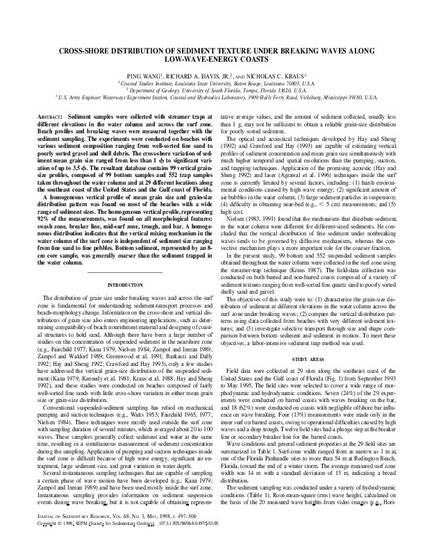
Sediment samples were collected with streamer traps at different elevations in the water column and across the surf zone. Beach profiles and breaking waves were measured together with the sediment sampling. The experiments were conducted on beaches with various sediment composition ranging from well-sorted fine sand to poorly sorted gravel and shell debris. The cross-shore variation of sediment mean grain size ranged from less than 1 phi to significant variation of up to 3.5 phi . The resultant database contains 99 vertical grain-size profiles, composed of 99 bottom samples and 552 trap samples taken throughout the water column and at 29 different locations along the southeast coast of the United States and the Gulf coast of Florida. A homogeneous vertical profile of mean grain size and grain-size distribution pattern was found on most of the beaches with a wide range of sediment sizes. The homogeneous vertical profile, representing 92% of the measurements, was found on all morphological features: swash zone, breaker line, mid-surf zone, trough, and bar. A homogeneous distribution indicates that the vertical mixing mechanism in the water column of the surf zone is independent of sediment size ranging from fine sand to fine pebbles. Bottom sediment, represented by an 8-cm core sample, was generally coarser than the sediment trapped in the water column.
Journal of Sedimentary Research, v. 68, issue 3, p. 497-506
Available at: http://works.bepress.com/pingwang/58/